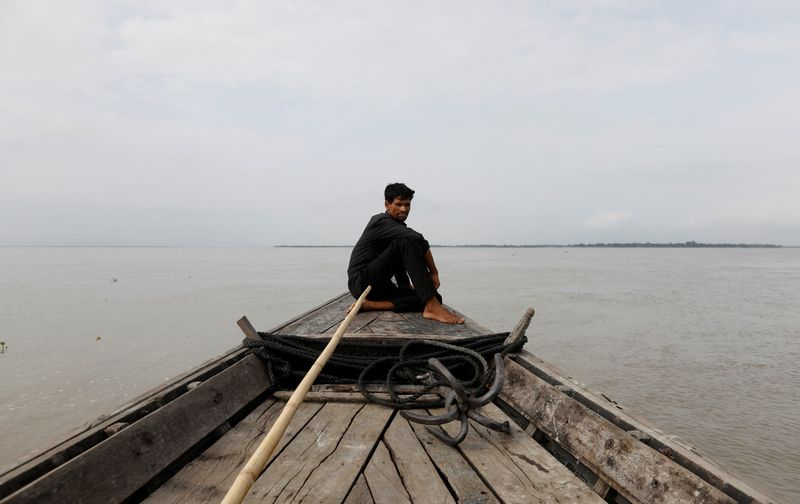Introduction to the World’s Largest Hydropower Dam
China has taken a significant step forward in its energy infrastructure by announcing the commencement of what will be the world’s largest hydropower dam. This ambitious project, located on the eastern edge of the Tibetan Plateau, is expected to cost at least $170 billion. The news was reported by the official Xinhua news agency, marking a major development in China’s ongoing efforts to expand its renewable energy capabilities.
This new hydropower initiative is seen as one of the most significant projects since the Three Gorges Dam on the Yangtze River. The dam is part of a larger plan involving five cascade hydropower stations that will generate an impressive 300 billion kilowatt-hours of electricity annually. This amount of energy is equivalent to the annual consumption of Britain, highlighting the scale and importance of the project.
Location and Environmental Considerations
The dam will be situated in the lower reaches of the Yarlung Zangbo River, where a section of the river drops 2,000 meters over a distance of 50 kilometers. This dramatic drop presents a significant opportunity for hydropower generation. However, the project has raised concerns from neighboring countries and environmental organizations.
India and Bangladesh have expressed worries about the potential impact of the dam on downstream populations, who rely on the river for their water needs. Additionally, non-governmental organizations (NGOs) have warned that the project could threaten one of the most diverse and ecologically rich environments on the plateau. Despite these concerns, Beijing claims that the dam will meet power demands in Tibet and across China without significantly affecting downstream water supplies or the environment.
Economic Impacts and Market Reactions
The announcement of the dam has had a noticeable effect on the Chinese market. Investors viewed the news as a sign of economic stimulus, leading to increased stock prices and higher bond yields. The CSI Construction & Engineering Index saw a rise of up to 4%, reaching a seven-month high. Several construction companies, including Power Construction Corporation of China and Arcplus Group PLC, experienced significant gains, with their shares hitting the daily limit of 10%.
From an investment perspective, experts like Wang Zhuo, a partner at Shanghai Zhuozhu Investment Management, note that mature hydropower projects can offer stable returns similar to bonds. However, he also cautioned against speculative buying, which could inflate stock valuations.
Broader Economic Implications
The project is expected to drive demand for construction materials such as cement and civil explosives. Analysts from Huatai Securities highlighted this potential, noting that companies involved in the supply chain could benefit significantly. For instance, shares of Hunan Wuxin Tunnel Intelligent Equipment Co and Geokang Technologies Co Ltd surged by 30% and 10%, respectively.
Cement maker Xizang Tianlu Co Ltd and Tibet GaoZheng Explosive Co also saw their shares jump by the maximum 10%. These market reactions underscore the broader economic implications of the project, which is expected to boost public investment and support economic growth.
Government and Environmental Commitments
Chinese Premier Li Qiang described the dam as a “project of the century,” emphasizing the need for ecological conservation to prevent environmental damage. This commitment reflects the government’s recognition of the potential environmental impacts and the importance of sustainable development.
Government bond yields rose across the board, with the most-traded 30-year treasury futures falling to five-week lows. Investors interpreted the news as part of a broader economic stimulus strategy. The project, managed by the newly formed state-owned China Yajiang Group, represents a significant investment in public infrastructure aimed at supporting economic growth.
Potential Economic Benefits
According to Citi, the project could provide a substantial boost to the economy, with an estimated investment/GDP increase of 120 billion yuan for a single year if construction takes 10 years. While the exact number of jobs created remains unspecified, the Three Gorges Dam project generated nearly a million jobs during its construction period, although it also displaced a similar number of people.
Authorities have not yet provided details on the number of people who might be displaced by the Yarlung Zangbo project. NGOs, however, warn that the dam could cause irreversible harm to the Tibetan Plateau and affect millions of people downstream. The Yarlung Zangbo River becomes the Brahmaputra River as it flows into India and eventually into Bangladesh, highlighting the transboundary nature of the project’s impact.
Conclusion
The completion of this massive hydropower dam marks a significant milestone in China’s energy strategy. While it promises substantial economic benefits and a boost to renewable energy production, it also raises important environmental and social concerns. As the project moves forward, it will be crucial to balance economic growth with the need for sustainable and responsible development.







